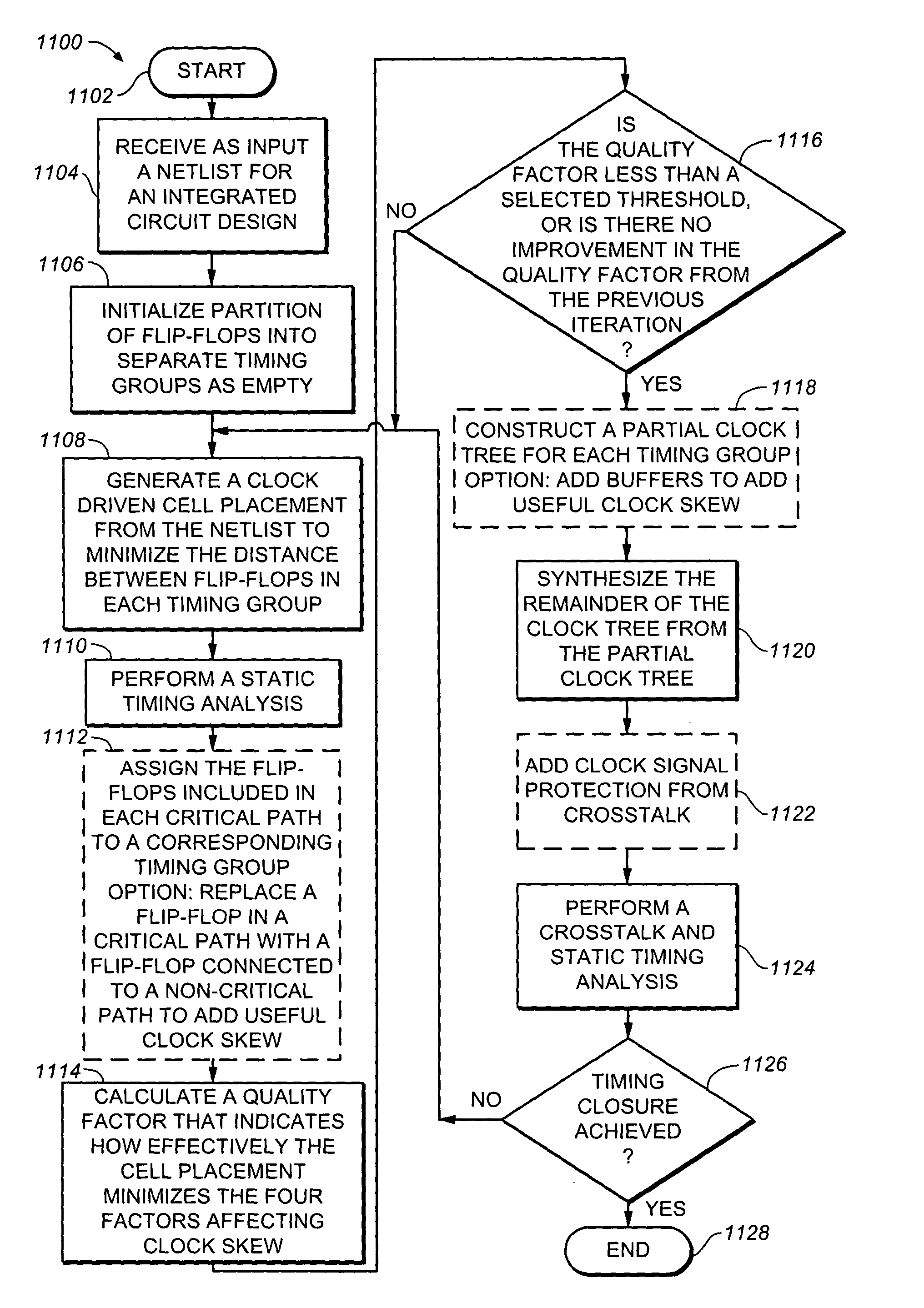Method of clock driven cell placement and clock tree synthesis for integrated circuit design
a technology of integrated circuit design and clock driven cell, which is applied in the field of design and manufacture of integrated circuits, can solve problems such as the reduction of the maximum operating frequency performance capability
- Summary
- Abstract
- Description
- Claims
- Application Information
AI Technical Summary
Benefits of technology
Problems solved by technology
Method used
Image
Examples
Embodiment Construction
[0033] A disadvantage of previous methods of distributing a clock signal in an integrated circuit design is that they do not take into account the timing constraints in the data paths between flip-flops that are clocked by a common clock signal. Timing violations that result from the clock distribution design require an iterative process of redesign and optimization of the clock distribution network, which may significantly increase the design time and cost of the integrated circuit design.
[0034]FIG. 1 illustrates a flow chart of a design flow of the prior art for an integrated circuit design.
[0035] Step 102 is the entry point of the flow chart 100.
[0036] In step 104, a netlist of an integrated circuit design is received as input. The netlist includes information as to what cells are to be placed and how they are connected to one another.
[0037] In step 106, a time driven cell placement is generated from the netlist that typically minimizes the total propagation delay.
[0038] In ...
PUM
 Login to View More
Login to View More Abstract
Description
Claims
Application Information
 Login to View More
Login to View More - R&D
- Intellectual Property
- Life Sciences
- Materials
- Tech Scout
- Unparalleled Data Quality
- Higher Quality Content
- 60% Fewer Hallucinations
Browse by: Latest US Patents, China's latest patents, Technical Efficacy Thesaurus, Application Domain, Technology Topic, Popular Technical Reports.
© 2025 PatSnap. All rights reserved.Legal|Privacy policy|Modern Slavery Act Transparency Statement|Sitemap|About US| Contact US: help@patsnap.com



